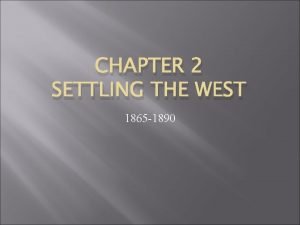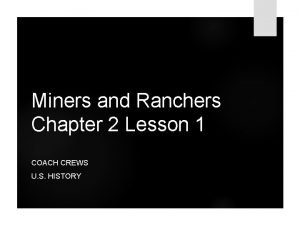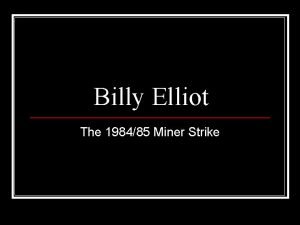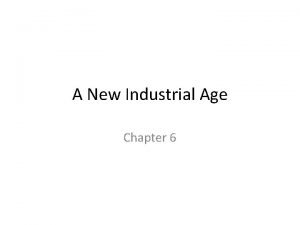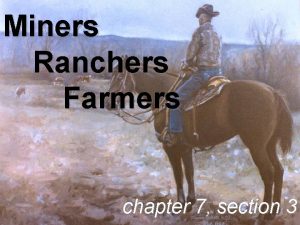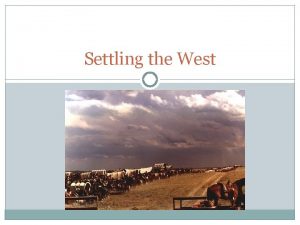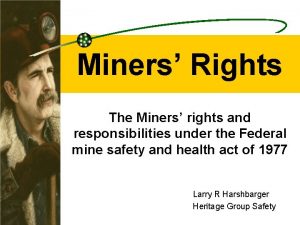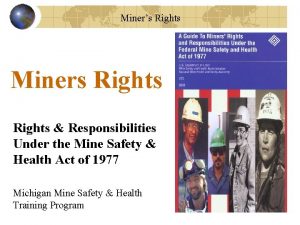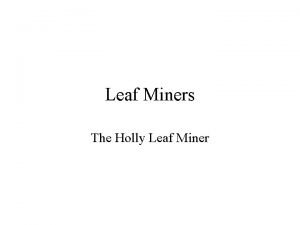Chapter 4 Settling the West Section 1 Miners






- Slides: 6

Chapter 4: Settling the West Section 1: Miners and Ranchers Pages 158 - 165

Boomtowns • Overnight tiny frontier towns were transformed. Virginia City grew from a few hundred people to 30, 000 in a few months. These quickly growing towns were called boomtowns. • Henry Comstock sold off his gold claim stake. Unaware to him, his land had the largest silver mine in the area. News of Comstock Lode was valued at $230 million. Nevada was admitted as the 36 th state in 1864 and helped to finance the Union army.

Law in the Wild West • Boomtowns were rowdy places. • “Law and Order” was enforced by vigilance committees, self-appointed volunteers who would track down and punish wrongdoers.

Mining Leads to Statehood • Mining spurred the development of Colorado, Arizona, North Dakota, South Dakota, and Montana. • Gold and silver was worth over $1 billion to Colorado; lead to Denver growing into the hub of mining in the west.

Settling the Hispanic Southwest • Large land owners owned ranches, or haciendas • The discovery of gold in California led to its population growing. • Some Hispanic Californians welcomed the 49 ers, other distrusted them.

Cattle • Demand for beef back east led to a rise in the cattle industry. • English-speaking ranchers and vaqueros (Spanish for cowboy) engaged in many disputes over land. • Land was fenced in and rival ranches were attacked. • As towns like Los Angeles, Albuquerque, and El Paso grew Hispanics settled into enclaves known as barrios where Spanish speaking businesses helped to preserve Hispanic culture.
